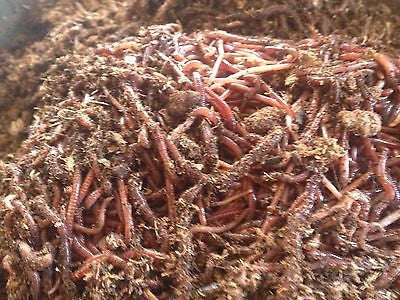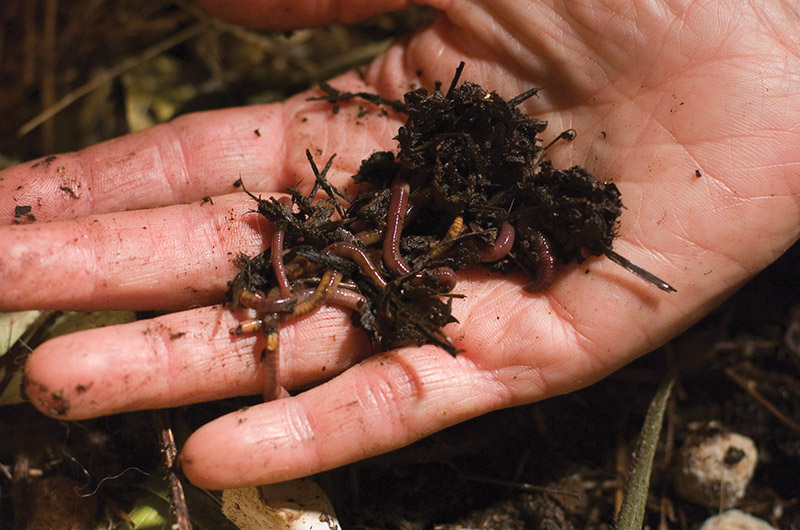Red Wiggler Worms Demystified: Unlocking the Keys of Vermiculture for Greener Living and Nutrient-Rich Soil
In the realm of lasting practices for enriching dirt high quality and promoting eco-conscious living, red wiggler worms play a pivotal yet frequently ignored duty. These simple animals have the impressive ability to transform organic waste into nutrient-rich spreadings that act as a powerful natural fertilizer. By delving right into the globe of vermiculture, one can reveal a variety of benefits that extend much beyond typical composting methods. Recognizing the details of taking care of these worms, optimizing their environment, and utilizing their castings can cause a greener lifestyle and much healthier dirt for plants to prosper.
The Function of Red Wiggler Worms
Red Wiggler worms play an important duty in composting systems by effectively damaging down raw material right into nutrient-rich spreadings. These starved eaters consume a variety of organic materials, such as kitchen area scraps, backyard waste, and paper items. As they feed, the worms' digestion processes damage down the raw material into a penalty, dark, and nutrient-dense product referred to as worm spreadings or vermicompost.
The spreadings created by Red Wiggler worms are extremely beneficial for soil health and plant development. They are rich in crucial nutrients like phosphorus, potassium, and nitrogen, which are essential for sustaining healthy and balanced plant advancement. Furthermore, worm castings include useful microorganisms and enzymes that assist boost soil framework, increase water retention, and improve nutrient uptake by plants.
Benefits of Vermicomposting

It improves soil structure, boosts dirt aeration, and raises soil dampness retention. Vermicompost likewise enhances the dirt with important nutrients like nitrogen, potassium, and phosphorus, advertising plant growth and overall soil fertility.
In addition, vermicomposting supports sustainable gardening practices by giving a chemical-free and natural choice to synthetic fertilizers. Red Wiggler Worms. This eco-friendly strategy not only enriches the soil however additionally helps in reducing dependence on hazardous chemicals, advertising a greener and much more sustainable method of gardening
Establishing a Worm Container
When establishing a worm container for vermicomposting, appropriate setup is important to make sure the success of the composting procedure. The first step in setting up a worm container is choosing a suitable container.
After including the bedding, present the red wiggler worms to the container. It is recommended to begin with a small number of worms and progressively raise as they multiply. The worms must then be provided with food scraps such as vegetables and fruit peels, coffee grounds, and eggshells. It is necessary to avoid adding meat, milk, oily, or salted foods to stop drawing in pests and developing undesirable odors.
Frequently monitor the wetness degrees and temperature in the look at this now worm bin to ensure ideal conditions for the worms. With proper configuration and upkeep, the worm container will efficiently transform natural waste right into nutrient-rich garden compost for your plants and garden.
Harvesting Worm Spreadings
To effectively gather look these up nutrient-rich worm spreadings from your vermicomposting system, an organized harvesting method is crucial. There are a couple of crucial actions to comply with to make sure a successful process when it comes time to harvest the worm castings. Quit including fresh food scraps to one side of the worm container for a couple of weeks before harvesting. This urges the worms to move sideways with fresh bed linen and food, making it simpler to scoop out the spreadings from the opposite.

Troubleshooting Common Issues
Identifying and attending to common obstacles that may arise during the vermicomposting process is essential for keeping a effective and healthy and balanced worm bin. One usual concern that vermicomposters encounter is overfeeding. Including excess food scraps can cause a build-up of dampness and acidity in the worm bin, possibly hurting the worms. To avoid this, feed the worms in small amounts, making sure that the food scraps are sufficiently damaged pop over to this web-site down prior to adding more. An additional problem is unpleasant odors rising from the worm bin. Foul scents indicate anaerobic conditions, commonly brought on by overwatering or insufficient air flow. To fix this, readjust the wetness degrees by adding completely dry bed linen materials like shredded newspaper or cardboard and increase aeration by transforming the bed linen on a regular basis.
Additionally, if the worm population is decreasing or the worms appear undesirable, it could be as a result of ecological stressors such as extreme temperatures or pH levels. Monitoring these aspects and making required modifications is essential for the health of the worms. By repairing these common concerns immediately, vermicomposters can make sure a successful and smooth vermicomposting procedure while maintaining a thriving worm populace.

Final Thought
In verdict, red wiggler worms play a vital duty in vermiculture by damaging down organic issue into nutrient-rich dirt. Establishing up a worm bin is essential for successful vermiculture, and gathering worm castings offers valuable compost for horticulture.
As they feed, the worms' digestion procedures damage down the natural matter right into a penalty, dark, and nutrient-dense product recognized as worm spreadings or vermicompost.
The castings generated by Red Wiggler worms are extremely helpful for dirt health and plant development. Adding excess food scraps can lead to an accumulation of dampness and acidity in the worm container, potentially hurting the worms.In addition, if the worm populace is decreasing or the worms appear unhealthy, it can be due to ecological stress factors such as extreme temperatures or pH levels. Establishing up a worm container is essential for effective vermiculture, and harvesting worm spreadings supplies useful garden compost for horticulture.